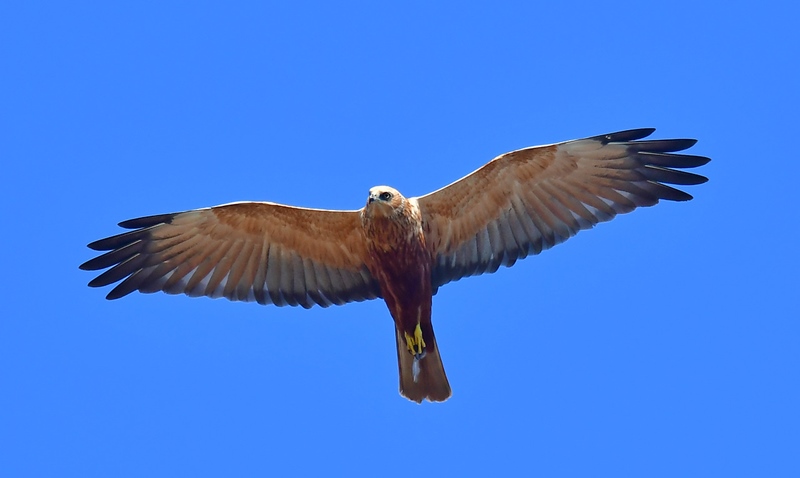When my younger brother got his first bike, he developed the unusual habit of looking down at the foot pedals while he was cycling along. A combination of this and an unexpectedly parked car led to a badly chipped front tooth and a determination not to cycle like that ever again. If you don’t look where you are going, you are bound to end up in a pickle.
This is something that our bird this month doesn’t seem to have learnt. Each year there are reports of stunned Marsh Harriers which have flown into trees, telegraph poles, electricity pylons and the like while flying along at low level with their heads down, which is their usual method of hunting.
It is a rare breeding bird in the UK, but there are up to 1,000 breeding pairs in the whole of Spain. These numbers are heavily augmented during the winter months by birds visiting from more northerly and easterly parts of Europe; we are not sure whether they actually breed in the Clot, but indications are that they might be doing that. You could mistake them at first for some species of eagle or buzzard (and there are a few of those about as well) as they are quite large birds, and they will drift lazily in the thermals as they hunt over their range in a similar fashion. What you are looking for in the way of identification is a long-tailed bird with wings held in a shallow V shape as it circles overhead.
Most sightings in the Clot are of juvenile and female birds with a creamy-coloured head; my photograph shows the male which is actually smaller and lighter coloured, with more grey in the tail and wings, and the head is streaked with grey and brown. As the name implies, these are birds of wetland areas, feeding on birds, mammals, reptiles and amphibians which they catch by flying along slowly at low level, then dropping down suddenly to catch their prey. There have been reports of Marsh Harriers actually drowning their prey; sitting on the water holding their catch beneath them until they were sure that it was dead.
An interesting fact about male Marsh Harriers is that they are often bigamous, raising two or sometimes three separate families in one season, which means that during that time he has a lot of work on his hands (or claws) to keep multiple broods well fed!
The Spanish name for the Marsh Harrier is Aguilucho Lagunero which of course refers to their habitat – lagoons and marshes – and the fact that it looks a bit like an eagle. If you are in one of the bird hides in the Clot, or just strolling along the paths, and all of a sudden the whole duck population seems to take to the skies in a quacking panic, it is worth while scanning the skies overhead to see if one of these magnificent birds has spooked them. You might like your paté, but the Marsh Harrier likes his Pato.
You can see more photographs of birds and other animals from our area by visiting www.marketheridge.smugmug.com



